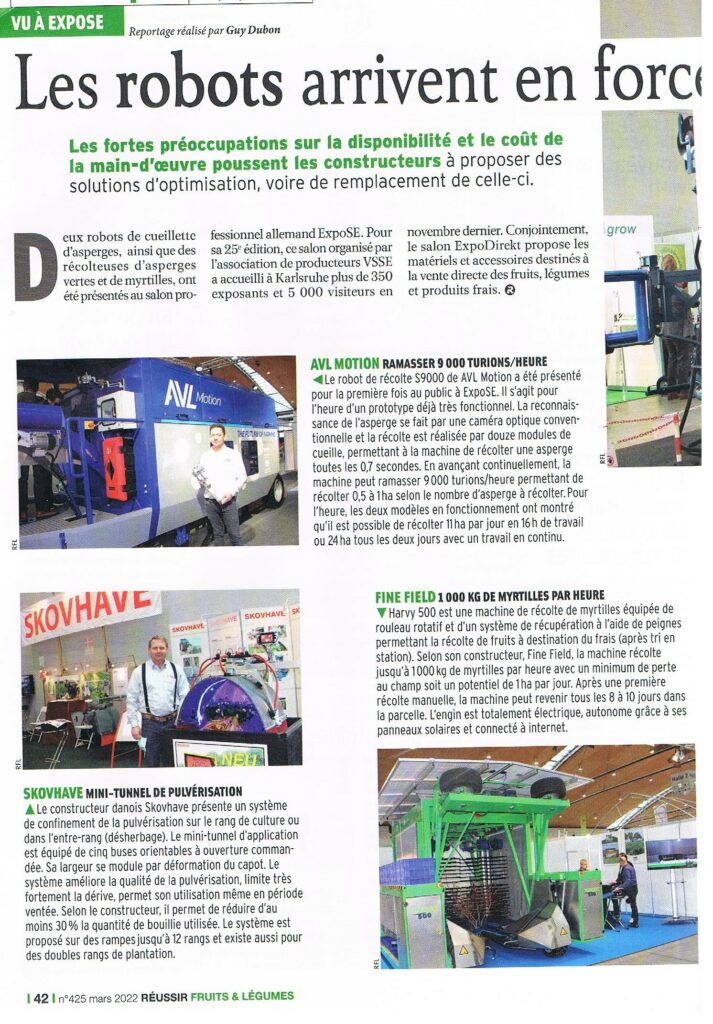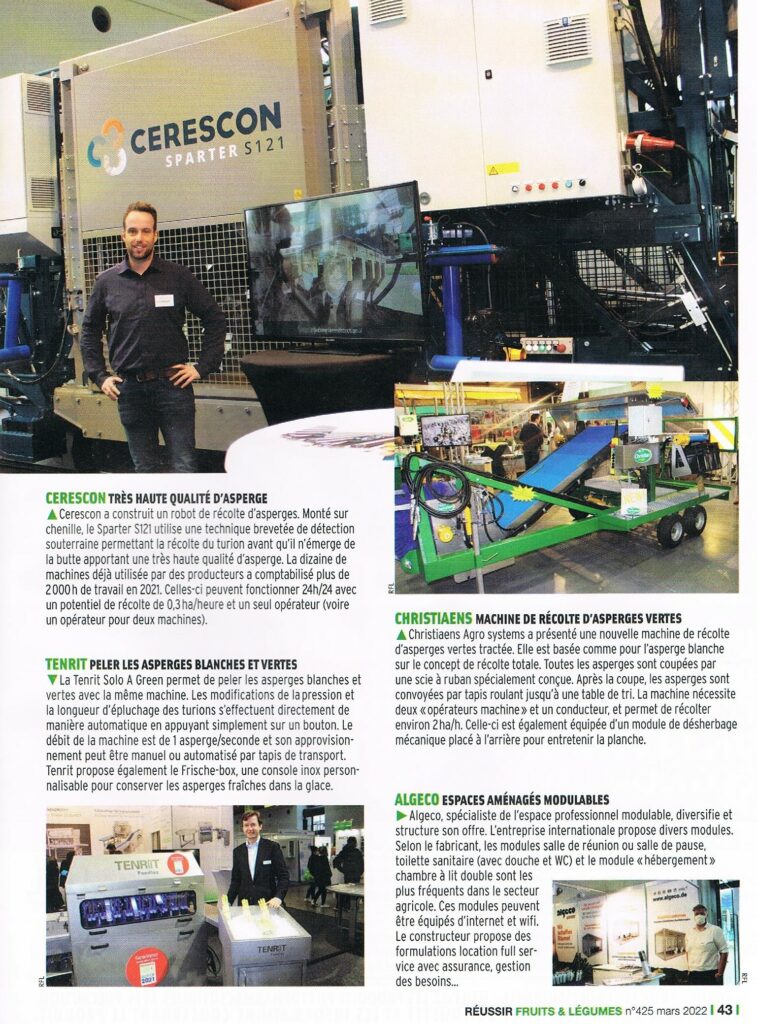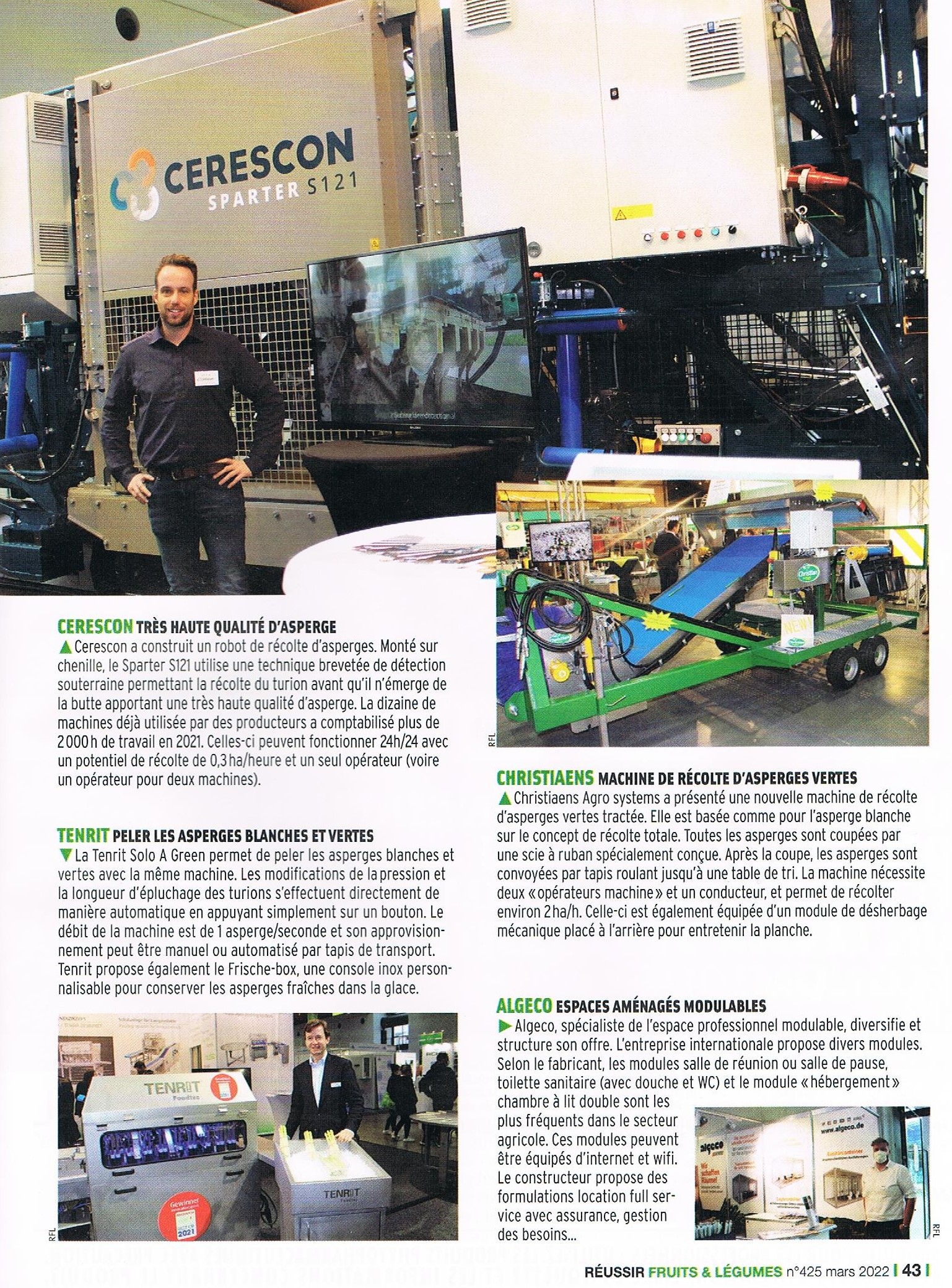Cultivation Technology Is Evolving
New asparagus harvesting robots seen in Karlsrhue.
It is indeed possible to use robots to harvest asparagus. These robots typically use cameras and sensors to locate the asparagus and mechanical arms to harvest them. Depending on the model, they can harvest up to 20,000 asparagus spears per day—far more than a human worker could manage.
Cultivation technology: still limited use
However, it’s important to note that the use of robots for asparagus harvesting is still fairly limited, and most farms still rely on human labor for this task. This is partly due to the high cost of purchasing and maintaining the robots, as well as the difficulty of adapting them to different types of terrain and growing conditions.
There are several new technologies that can be used to grow asparagus more efficiently and productively. Here are a few examples:
- Line sowing: Instead of planting asparagus seeds manually, some farms use line-sowing machines for faster and more precise planting.
- Drip irrigation: This system delivers water and nutrients directly to the plant roots, helping reduce water loss and improving asparagus growth.
- Mulch-covered beds: Using a layer of mulch before planting helps protect plant roots from heat and drought, which can improve growth.
- Greenhouses: Some farms grow asparagus in greenhouses, offering protection from bad weather and better control over growing conditions to boost yield.
- Precision agriculture: This method uses cultivation technologies like soil mapping, field sensors, and drones to collect detailed data on plant growth conditions and adjust practices accordingly.




